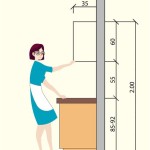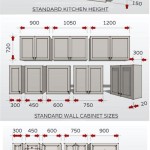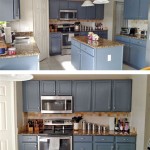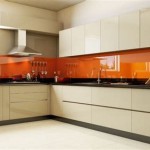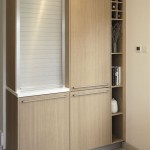Essential Aspects of Choosing the Best Oil Primer for Kitchen Cabinets
Upgrading your kitchen cabinets with a fresh coat of paint can revitalize the entire space. However, achieving a professional-looking finish requires proper preparation, and an oil primer is crucial for ensuring a smooth, durable surface. Here are essential aspects to consider when selecting the best oil primer for your kitchen cabinets:
Type of Oil Primer
There are two main types of oil primers: alkyd and oil-based. Alkyd primers, also known as latex-modified alkyd or hybrid primers, are a combination of alkyd and latex resins. They offer good adhesion, block stains effectively, and allow for quick drying times. Oil-based primers are made with traditional linseed oil or soybean oil, providing excellent leveling properties and a deep penetration into the wood grain. They are ideal for very porous woods or surfaces with heavy staining but have longer drying times.
Purpose of Primer
Consider the specific needs of your kitchen cabinets when selecting an oil primer. If you're painting over bare wood, opt for a thick primer that fills in the wood grain and provides a smooth foundation. For surfaces with existing paint or stains, a medium-bodied primer will suffice to block imperfections. If you're concerned about tannins or bleeding stains, choose a primer specifically designed to seal stains and prevent them from affecting the topcoat.
Color and Sheen
Oil primers come in a variety of colors to match the color of your topcoat paint. Selecting a primer that closely matches the finish color minimizes the need for multiple coats of topcoat paint. The sheen of the primer should complement the sheen of the topcoat, with a flat or matte primer providing a smooth, non-reflective surface ideal for most kitchen cabinets.
Drying Time
The drying time of an oil primer is crucial for efficient project completion. Some primers dry within a few hours, while others may take up to overnight or longer to fully cure. Choose a primer with a drying time that accommodates your project schedule and allows for ample time for sanding and applying the topcoat.
Application Method
Oil primers can be applied using a brush, roller, or spray gun. Brushes provide precise control, while rollers are ideal for covering larger surfaces quickly. Spray guns offer the best finish but require a higher level of expertise. Consider the size and complexity of your cabinets and choose the application method that best suits your needs.
Cleanup and Safety
Oil primers require cleanup with mineral spirits or solvents. Proper disposal of the used cleanup materials is important to prevent environmental damage. Additionally, oil primers release volatile organic compounds (VOCs) during application and drying. Ensure adequate ventilation by opening windows or using a fan during use.
Conclusion
Choosing the right oil primer for your kitchen cabinets is essential for achieving a durable, professional-looking finish. Consider the type of primer, purpose, color and sheen, drying time, application method, and cleanup and safety factors to make an informed decision. By selecting the best oil primer, you'll create a strong foundation for your painted kitchen cabinets that will withstand everyday use and enhance the visual appeal of your kitchen for years to come.
What Is The Best Primer To Use When Painting Kitchen Cabinets Quora

What Is The Best Primer For Kitchen Cabinets Jim Handyman

Paint Primer 101 Latex Vs Sac Oil Based A Piece Of Rainbow

Refinish Kitchen Cabinets With Kilz Restoration Primer

Zinsser Cover Stain 5 Gal White Oil Based Interior Exterior Primer And Sealer 3500 The Home Depot

Best Paint For Cabinets 2024 24 Brands Blind Tested Reviewed

How To Paint Kitchen Cabinets In 7 Simple Steps

The Best Primer For Oak Cabinets Why You Need To Prime Don T Skip This Painted By Kayla Payne

Best Primers For Cabinets Mistakes To Avoid While Painting

Kitchen Cabinets Best Paint For Oil Based Waterbased Cleaning Tsp Woodworker S Journal
Related Posts



